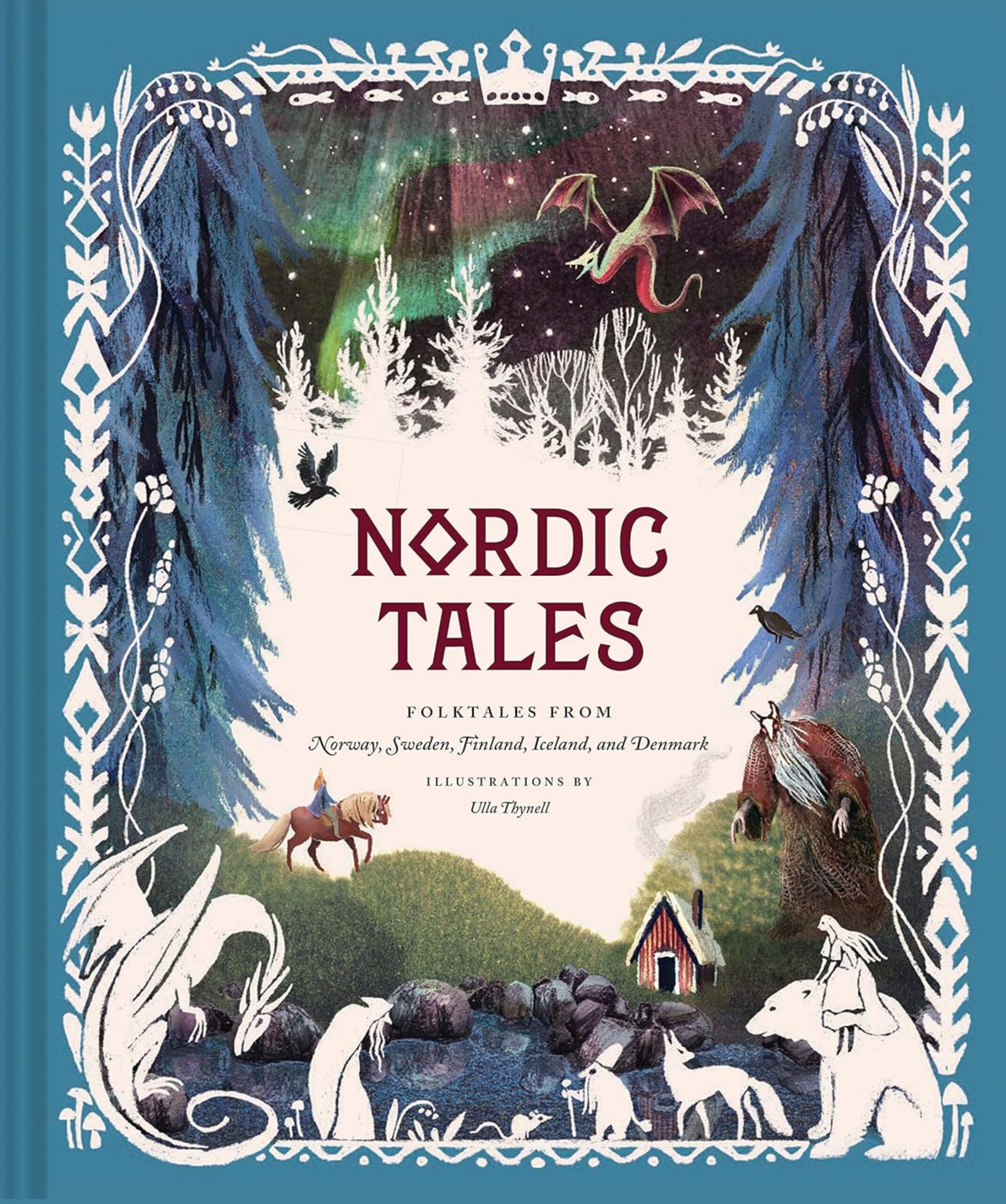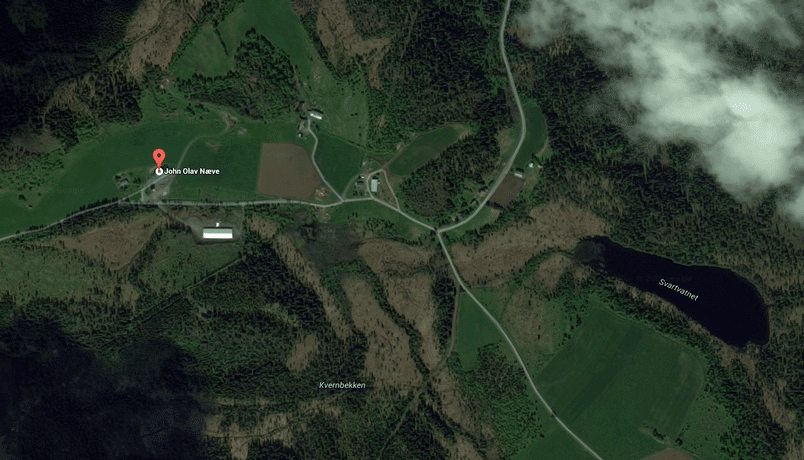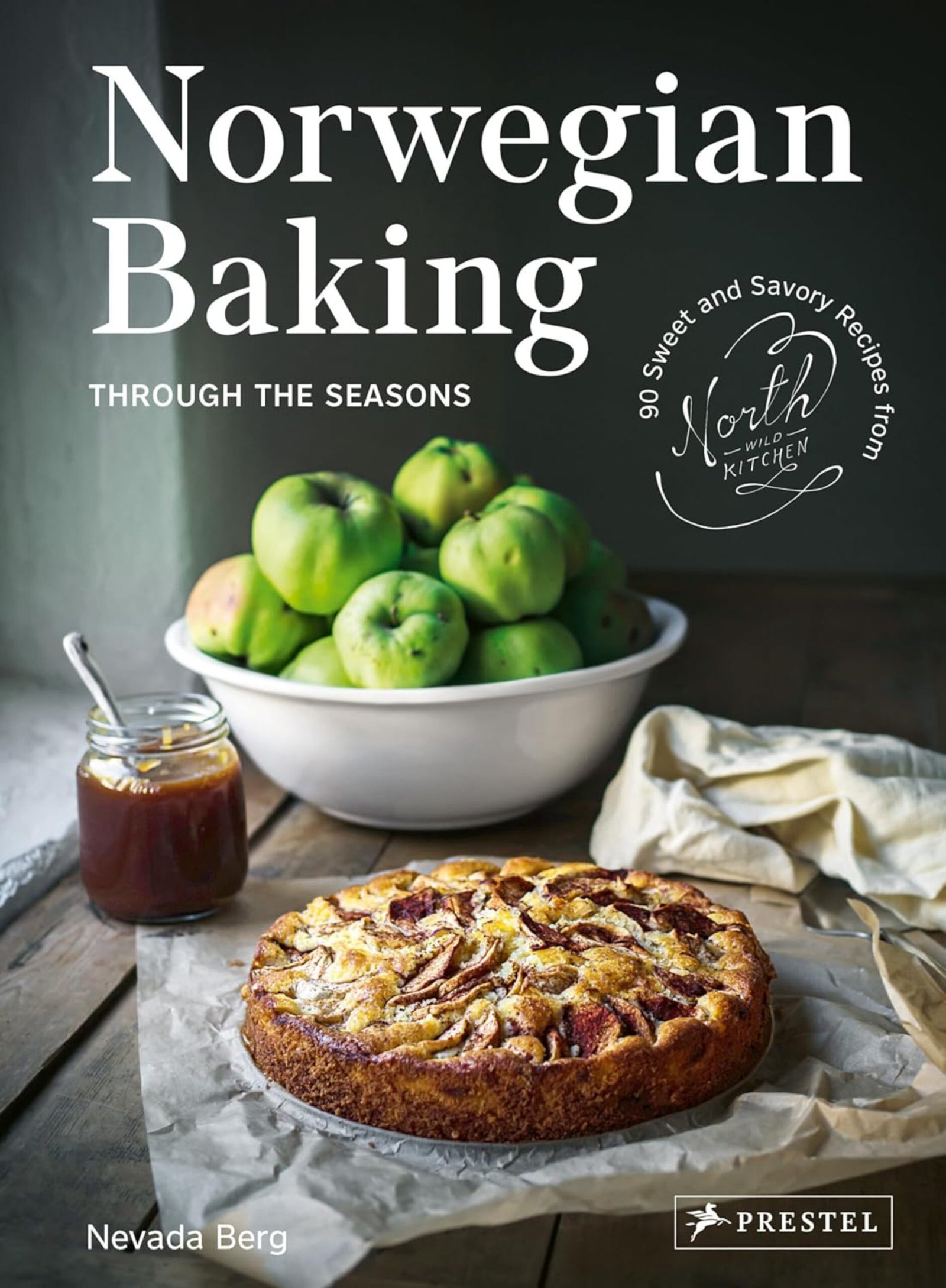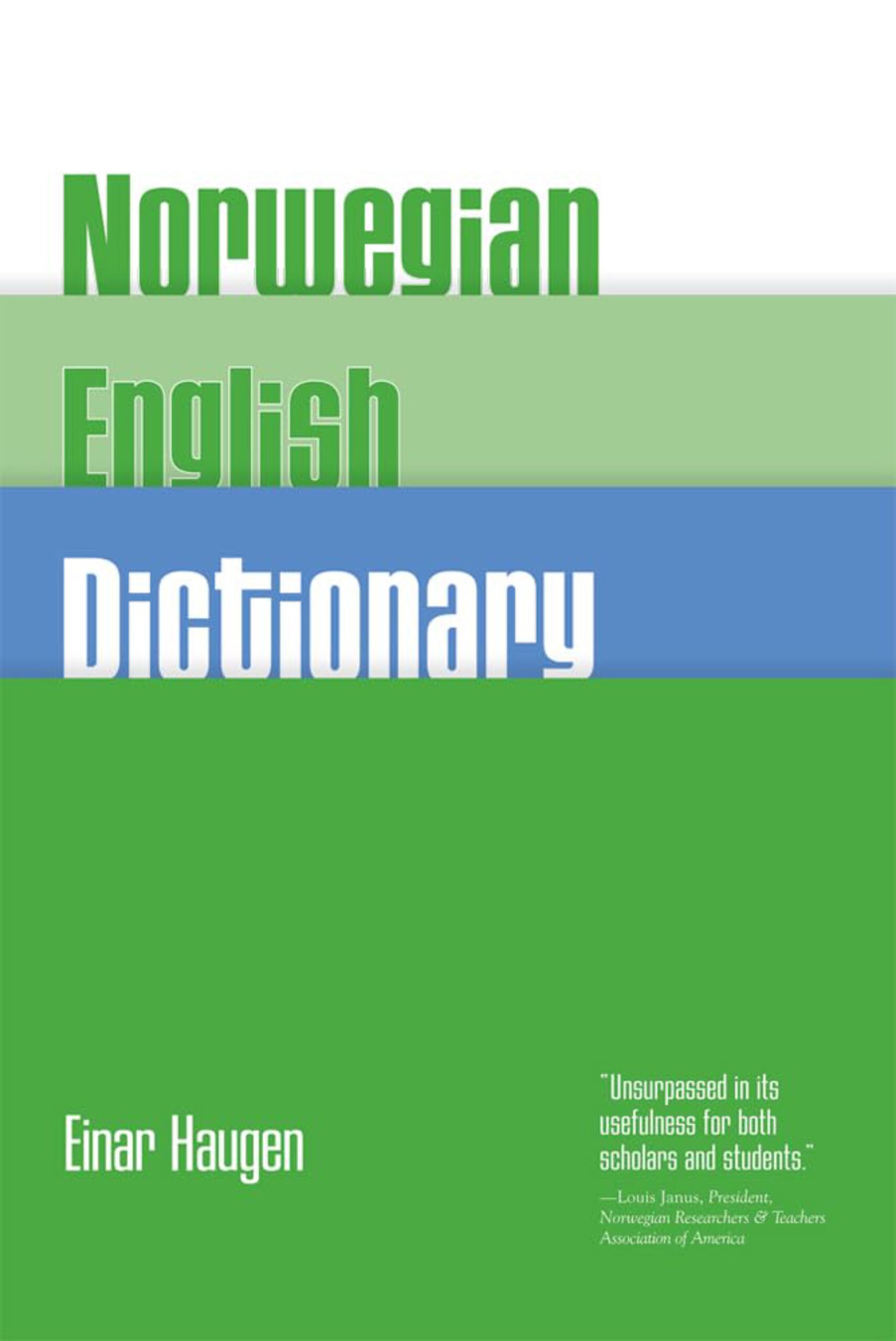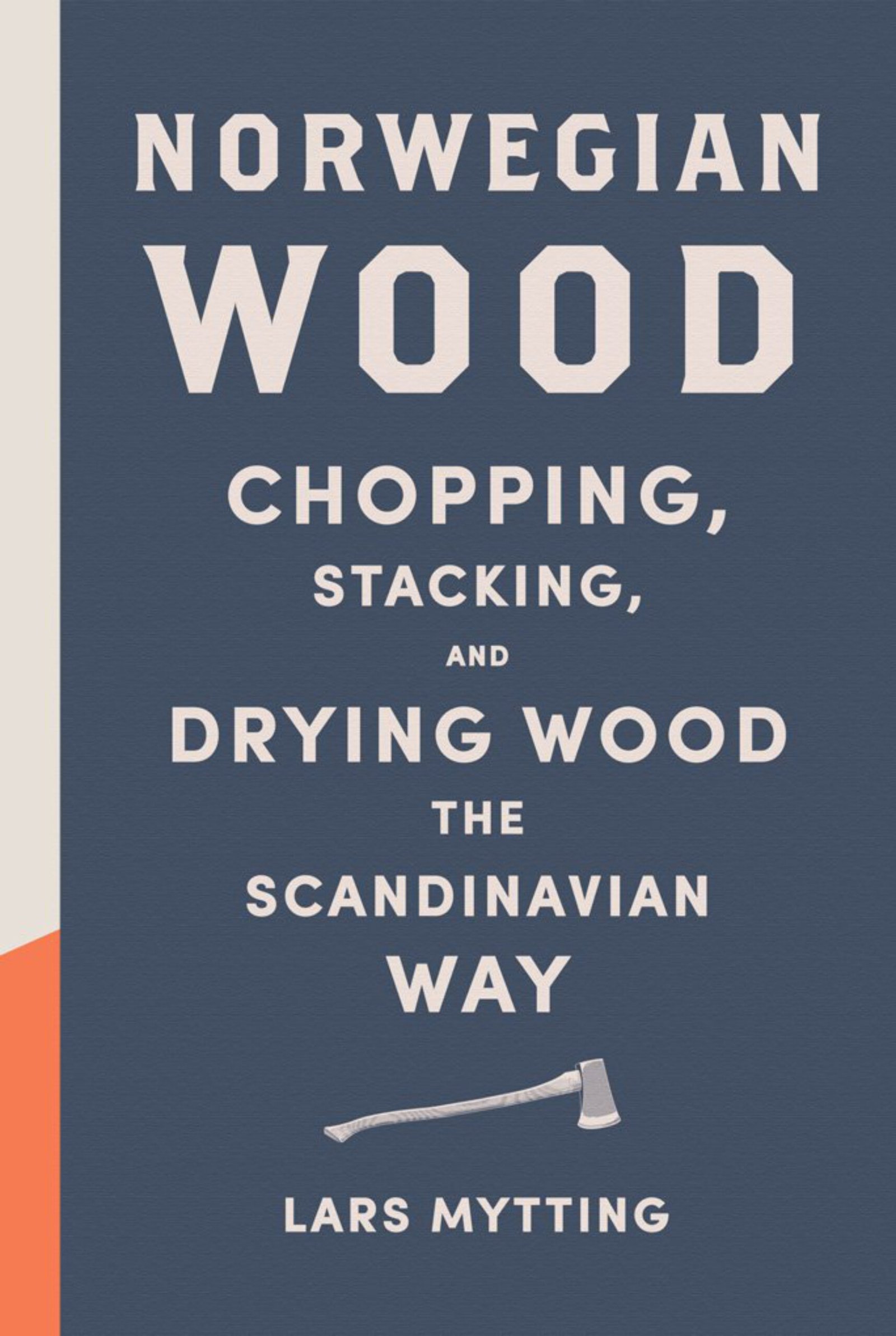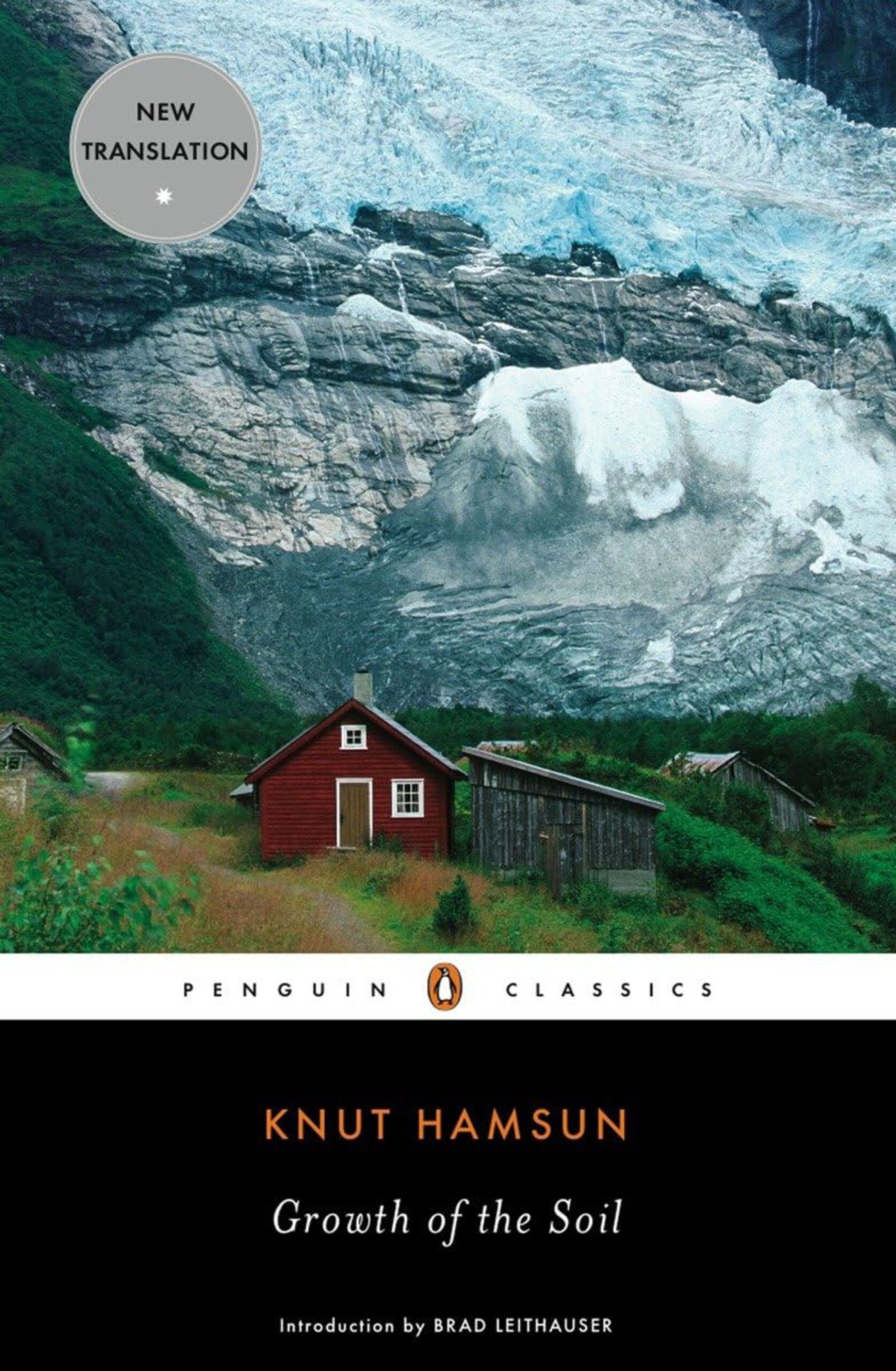In the beginning, there was ice and barren land
Picture the beginning: during the last ice-age, Norway was a vast and empty land. As the ice subsided, fjords, mountains and valleys started to appear. Gradually, the landscape was inhabited by plants, animals and people.
The first people were hunters and gatherers, and later they also became farmers. Elements of the age-old traditions of hunting, fishing and generally harvesting the uncultivated part of the land still survive today.
The long and cold winters required that every storeroom was filled to the brink when the growing season was over: all available resources had to be utilised. There had to be enough food to keep both man and domestic animal fed until spring and summer returned once again.
Breaking new land
As the population grew, men and women would break out from their groups to settle on new land. People would always be on the look-out for places where they could raise and feed their families. It is in this setting that the history of Stornæve – or Næve – begins.
Once upon a time, there was that very first day when a single person – or a group of people – came walking through the landscape here. This is a rich and lush part of the country, with forest-clad valleys, highlands, rivers and lakes. Today’s name of the surrounding area is Hølonda – or Høylandet – the high land.
The people who arrived here would have been looking for the ultimate spot to settle down and build their dwellings. If we could have seen the world through their eyes, we would have felt the excitement – but also a sense of great responsibility. Food and shelter were the vital ingredients of survival.
Næve is situated at 350 metres above sea level. No other farm south of Skolda is located at a higher altitude than this. The people settling here may have been motivated by the rich possibilities for fishing and hunting. There are several lakes and rivers in the immediate vicinity.
The age of the farm
Næve is an old farm name, potentially given by the surrounding landscape. It could stem from words indicating a nose or a beak. It is likely that the farm has been here since the Viking era or before.
Local folklore says that the farm got its name from the man who first settled here, Nefer.
A farm somewhat out of the ordinary for the region
At the very beginning, Næve was a settlement out of the ordinary for this region: it was quite isolated and far away from the neighbouring communities. It would have taken many, many hours to walk to the nearest settlement – with no roads, just paths leading through the wild landscape. This relative isolation may have lasted for several hundred years.
In the surrounding areas – in Orkdal, Meldal, Gauldal and around the lakes in the north-eastern part of Hølonda and in Skaun – the farms would have been situated quite close to one another in clusters – or grender.
There are also other isolated farms in the region, but they would have been cleared much later, in times when available land was scarce.
Situated on the borders between Hølonda and Meldal
Næve is situated on the borders between the communities of Hølonda and Meldal, and there would be contact in both directions. Today, Hølonda is part of the municipality of Melhus.
In the olden times, there would have been people regularly moving along the old paths crossing the area – in particular when there was still activity connected to the smelting furnace in Sæterdalen. This smelting furnace had a connection to the Løkken Verk in Meldal (a copper and pyrites mine). People travelling between the two locations would often have passed through Næve.
There was once a church built in connection with the smelting furnace in Sæterdalen, the Grutsæter church. The last bride to get married there was Randi Stornæve, in 1798 – when she got married to Erik Orvatnet.
Stornæve, Litlnæve and the cotter’s holdings
Næve was the name of the original farm and is generally used as the name for the surrounding area. Later, as the farm would be sectioned out, the main farm would be known as Stornæve (big Næve). A smaller part of the estate would be known as Litlnæve (Næve minor). Stornæve would later also be split into Utigarden Stornæve, Framigarden Stornæve (west – also named Lia) and Framigarden Stornæve (east).
Today, Stornæve is within the borders of the municipality of Melhus – and Litlnæve is part of Meldal.
Two cotter’s holdings are known to have been connected to the farm: Baklihaugen and Nævsbakkan (see more information below). In the fields, just up from the farm, there was also a small holding called Berghåggån where remains after old building foundations and previously ploughed sections could still be seen as per 1968.
How many people lived here?
In 1645 there were 8 people listed as living at Næve – and in 1665 4 people. These early headcounts only included men and boys over the age of 12 – as they were mainly conducted to get an overview of the number of men available for military service in case of war.
In the mid-1800s, 25 people were living at Næve, the people at Litlnæve not included.
Good crops and prosperity
Despite the higher altitude, the farm would provide good yields from its grain and other crops. In earlier times, it was one of the most productive farms in the community.
There was a grain mill at Næve as early as in 1621. The mill was located on the Litlnævsbekken (creek) (Kvernbekken).
The arable land – cleared over the course of several centuries – wasn’t just surrounding the farm buildings. A bit further out in the landscape you would find the field Åkerhåggån. At Bjønnlivatnet (lake) there were two haybarns, even in more recent times.
These are the animals listed in connection with taxation records:
- In 1628 there were 13 cattle.
- In 1657 there were 20 cattle, 15 goats and 16 sheep.
- In 1802 it was estimated that the farm could feed 2 horses, 14 cattle and 16 sheep.
- In 1835 there were 2 horses, 17 cattle, 26 sheep and 1 pig.
- In 1875, Ola Gunnarson had 2 horses, 14 cattle, 21 sheep, 12 goats and 2 pigs. Around this time, the keeping of goats was more or less abandoned in these whereabouts.
- When the estate after Ola Stornæve was settled in 1768, there were listed 14 cattle, 16 sheep, 6 goats, 2 pigs and a red mare (horse).
From timber coming from the Næve forests, the inhabitants here would have made charcoal, and they would have extracted tar.
No summer dairy in the mountains or the outfields
In more recent history, there has been no seter (summer dairy) related to the Næve farm(s). However, old names like Nævsætermyra and Vollmosætertjønna indicate that both Næve and the neighbouring Vollmo would have had a seter in earlier times.
Old tales
It is said in an old tale that Stornæve initially was part of Meldal. However, the farmer at Stornæve once killed a poacher from Granhaugen stealing fish from Kvennbekken and Litlnævsbekken (creeks). The culprit was expelled from Meldal by the local priest, but he didn’t have to go far. The expulsion was executed merely by moving the borders so that Stornæve farm from then on belonged to the neighbouring Hølonda. Whether this is a true story or not is not clear.
Historical information about large landowners owning Næve
According to the land registry of Olav Engelbrektson from around 1530, Næve belonged to the crown. The same applies around the year 1600. Later – between 1680 and 1693 – it belonged to Henrich Müller. After that, the farm was passed on to Peder Kaasbøll and Jacob With became the owner in 1697.
During all this time, the farmers running the farm would be leaseholders paying rent to the owner – in addition to paying different kinds of taxes to the crown.
In 1734, Ivar Stornæve and Ola Gaustad purchased the farm from Torsten With for 210 rigsdaler, thus becoming the first owners also living and cultivating the land here.
LISTING OF THE FAMILIES LIVING HERE
Below, you will find a list of the families and generations that have lived on the Stornæve farm from the time that public records started to be kept. Details related to the Litlnæve holding has not been included in this article. Information about the cotter’s holding Nævsbakkan has also been added as Ingebrigt Evenson – who was born in 1875 and who emigrated to America – came from the family living there.
Explanation of the reference code being used:
- The initial year indicates when the farm was handed over to the next owner or generation – or when the registration of this data took place.
- SN1 stands for Stornæve 1, being the main and original farm. SN2 indicates the instance when the original farm would have been split into two sections etc. – SN2 being the second section at that time.
- The letter following SN1 etc. indicates the individual family living there – so, for example, SN1-A would be the first family living on the original farm, SN1-B the next family etc.
- The last digit indicates the generation of that family – so, for example, SN1-C-1 means the first generation of the third family living on the original farm.
The earliest records
The first proper census conducted in Norway took place in 1769. Records prior to that time were not always complete and were mainly focused on the male population as mentioned above.
- Year 1557 SN1-A-1 Gollek.
- Year 1590 SN1-B-1 Ingeborg (most likely a widow running the farm until her offspring could take over).
The third known family – residing at Stornæve between 1606 and 1745
Year 1606 SN1-C-1 Erik (1) / wife’s name unknown.
1. Ola Erikson b. 1595 (took first over half the farm – then later the whole farm).
2. Randi.
3. Jon.
4. Ellev.
5. Vetl-Ellev (Wellelluff).
6. Helge
Year 1630 SN1-C-1 Erik (1) (gave away half the farm to his son Ola).
Year 1630 SN2-C-2 Ola Erikson b. 1595 / Randi (Ola took over half the farm from his father, Erik (1)).
1. Erik (2) b. 1630 – took over the farm.
2. Jøsten b. 1635 – went to Bjørkjønnsåsen.
Year 1650 SN1-D-1 Erik (3) Olsen (this third Erik took over the half of the farm kept by Erik (1) – may have been his son-in-law).
1. Karl b. 1653.
Year not known SN1-C-3 Erik (2) Olsen b. 1630 d. 1698 / married to Siri Mathiasdotter (this generation took over both halves of the farm, and it was once again one entity).
1. Even b. 1662 – took over the farm.
2. Ola b. 1665 -> Storfuglåsen.
3. Per b. 1668 d. 1737 – bell-ringer in Meldal.
4. Jøsten b. 1671 – went to Renåsen.
5. Beret – married to Jon Jonson Kulbrandstad, Megarden.
Year 1697 SN1-C-4 Even Erikson b. 1662 / married to Marit who died 1758, 80 years old, as a poor woman.
1. Siri – married to Ivar Erikson.
Year 1725 SN1-C-5 Siri Evensdotter d. 1754 / married to Ivar Erikson Skjegstad b. 1702 d. 1745 – bell-ringer.
1. Siri b. 1723 – married to Kristen Henrikson Skjegstad.
2. Marit b. 1728 – married to 1. Ola Nilsson Volløyen, 2. Sjur Olson Røsløkken. Lived at Volløymælen in Meldal.
3. Even b. 1730 – moved to Trondheim.
4. Erik – moved to Ila in Trondheim.
5. Guru – married to Jens Johnson, lived in Ila in Trondheim.
6. Gunhild – lived with her sister in Ila in 1761.
7. Rasmus b. 1741 – died as an infant.
8. Rasmus b. 1743 – died prior to 1761.
9. Ingebrigt b. 1744 d. 1746.
In 1734, SN1-C-5 Ivar Erikson Skjegstad – together with Ola Ingebrigtson Gaustad (see below) – purchased the farm from last large landowner, Torsten With. However, Ivar had problems keeping up with his financial obligations, and his family left Stornæve after his death in 1745. Ola Ingebrigtson Gaustad then took over the whole original farm and a new family reigned here.
The fourth family
The fourth known family came here in 1734 – and is still living on part of the original farm even today.
Year 1734 SN2-E-1 Ola Ingebrigtson Gaustad b. 1705 d. 1768.
married 1. to Ingeborg Ivarsdotter Kjøsen b. 1707 d. 1752
1. Ingebrigt b. 1736 – married to Marit Brønjølsdotter Kulbrandstad Nergard, went to Røen.
2. Beret – married to Even Fredrikson Lillenæve, Nordgard.
3. Marit b. 1743 – married to Tron Andersson Krokstad, Sørgard.
4. Eli b. 1745 – married to Nils Jonson Konstad.
5. Ivar b. 1748 – died prior to 1768.
6. Ola b. 1749 d. 1751.
married 2. 1753 to Ingeborg Persdotter Almås b. 1728 d. 1820.
1. Ingeborg b. 1754 – married 1. in 1786 to Pål Jonson Storkvikne – and 2. in 1803 to Jon Olson Fuglås, Orkdal.
2. Ingeborg b. 1756 – died as an infant.
3. Ingeborg b. 1759 – married 1793 to Tore Jonson Storkvikne.
4. Randi b. 1765 – married 1798 to Erik Mikkelson Orvatnet, Meldal.
5. Per b. 1767 – took over the farm.
After Ola Ingebrigtson Gaustad’s death in 1768, his widow Ingeborg Persdotter Almås remarried Ola Jonson Konstad and they ran the farm until Ingeborg and Ola’s youngest son, Per, took over.
Year 1769 SN1-E-1b Ingeborg Persdotter Almås / Ola Jonson Konstad b.1742 d. 1827 – schoolmaster and deputy sheriff.
1. Beret b. 1769 – married 1796 to Ola Ellevson Mellingseter, Skaun.
2. Ola b. 1771 d. 1790.
Year 1815 SN1-E-2 Per Olson b. 1767 d. 1832 / married 1800 to Ragnhild Olsdotter Trotland born at Herrem in Rennebu 1770 – died 1853.
1. Ingeborg b. 1801 – married 1829 to Tore Lornsson Blomli, Meldal.
2. Ola b. 1802 d. 1804.
3. Ola b. 1805 – took over the farm.
4. Kari b. 1810 – married 1. in 1831 to Ola Knutson Storbuan, Meldal. She returned home after 7 months as a widow. She later married 2. Sivert Erikson Konstad in Vassbygda.
Year 1825 SN1-E-3 Ola Person b. 1805 d. 1896. / married 1830 to Siri Ingebrigtsdotter Storfuglås b. 1794 d. 1868 from cholerine fever.
1. Ragnhild b. 1833 d. 1927 – married to Ola Gunnarson Klefstadgjerdet.
Year 1855 SN1-E-4 Ragnhild Olsdotter / married to Ola Gunnarson Klefstadgjerdet b. 1818 d. 1882.
1. Ola b. 1853 – left for America.
2. Gunnar b. 1855 – had Nordstu Løberg in Horg but left for America in 1880.
3. Per b. 1858 – left for America.
4. Sven b. 1859 d. 1930 – shop assistant with Jakob Hammerås, later shop manager at Gåsbakken.
5. Ingebrigt b. 1861 – married 1. to Marianna Johnsdotter Simz, Sjølian and lived there / married 2. to Johanna Arnsdotter Øverøyen, Meldal.
6. Even b. 1864 – married 1. to Eli Eriksdotter Dombu, Meldal / married 2. to Ingeborg Olsdotter Syrstadmo, Meldal.
7. Arn b. 1866 – died from meningitis in 1882. Died the day before his father. They were buried together on the 14th of May.
8. Ingeborg b. 1868 – married to Johannes Svenson Kulbrandstad, Teigen.
9. Ivar b. 1871 – married to Anna Marie Johnsdotter Simz, Sjølian (Gåsbakken, Heggdalen).
10. Sigrid b. 1874 d. 1942 (Nyheim, Gåsbakkan).
Ola Gunnarson Klefstadgjerdet sold off half the farm to Sivert and Erik Dombu from Meldal in 1878. He kept what today is known as Utigarden Stornæve which is the only part of the original farm that is continued in this article as there are no recorded emigrants to the United States coming from the later families living on the two other and later farm entities.
Year 1884 SN1-E-5 Even Olson b. 1864 d. 1934
married 1. to Eli Eriksdotter Dombu, Tøfte, Meldal b. 1868 d. 1895 from tuberculosis.
1. Ola b. 1893 – left for America.
2. Erik b. 1895 d. 1965 – married to Johanna Eriksdotter Lund (Haftorsløkk), Meldal.
married 2. to Ingeborg Olsdotter Syrstadmo from Meldal b. 1883 d. 1961.
1. Even b. 1904 d. 1920.
2. Ragnhild b. 1906 – died as an infant.
3. Ola b. 1909 – died as an infant.
4. Ragnhild Olina b. 1910 – married to Bernhard Karlson Stenseth, Åsan.
5. Olav b. 1912 – took over the farm.
6. John b. 1914 – married to Signe Andersdotter Stenseth. Carpenter.
7. Ingebjørg b. 1916 – died as an infant.
8. Ingeborg Alfrida b. 1917 – married to Ole Arntson Stenseth, Eidssaga.
9. Johanna Kristine b. 1919 – married to John Iverson Schjegstad.
Year 1942 SN1-E-6 Olav Evenson b. 1912 / married to Agnes Persdotter Buset b. 1922, Orkdal.
1. Even b. 1942 – married to Sigfrid Olsdotter Nergård, Orkdal b. 1944.
2. Ingrid Kristine b. 1944 – married to Ola Haugen, Orkdal.
3. Astrid b. 1950 – married to Asbjørn Gunnarson Sølberg, Meldal.
4. Ola b. 1950. – took over the farm
Year not known SN1-E-7 Ola Olavsen b. 1950
Year 2002 SN1-E-8 John Olav Olson b. 1980
The cotter’s holding Nævsbakkan
The cotter’s holding Nævsbakkan was located close to the lake Bjønnlivatnet, on the border towards Vollmoen in Meldal. This holding was abandoned around 1910.
In 1875, the cotter Even Bakkom had 3 cattle and 8 sheep here.
Tor Benjaminson b. 1803 d. 1846 had been working as a farmhand at Stornæve and he cleared land here when he got married in 1832. Tor died relatively young and his wife was left to fend for herself in an impoverished existence.
Tor – known as Tor Nævsbakkom – was from Semsåsen in Skaun and his parents were Benjamin Skjølberg from Orkdal and Ingeborg Johansdotter Blokkum (Oppistua Blokkan).
The first generation here:
Year 1832 Tor Benjaminson b. 1803 d. 1846 / married to Kirsti Andersdotter Klefstadhaugen b 1810 d. 1900.
1. Anders b. 1832 – moved to Haugen, Meldal in 1851.
2. Ingeborg b. 1834 – died 1844.
3. Kari b. 1836 – married to Nils Erikson Gåsbakk.
4. Brønjøl b. 1838 – married to Randi Ingebrigtsdotter Klefstad, Moen. Went to Skoldmoan under Trotland.
5. Even b. 1841 – took over the holding.
6. Marit b. 1844 – married to Jon Ingebrigtson Solem, Kvennavollen.
7. Ingeborg b. 1847 d. 1938 – married 1877 to Arn Arnson Eidsmotrøen, Melhus. Ingeborg was the mother of Ivar born 1874 son of Anton Ivarson who was the sheriff (lensmann) of Melhus.
The second generation here:
Even Torson took over the holding from his mother and he lived here with his family until 1910 when he purchased Konstadsaga and moved there.
Even Torson b. 1841 d. 1921 / married 1871 to Helle Ingebrigtsdotter Klefstad, Moen born in Sjølian in 1848 – died 1916.
1. Sigrid b. 1870 d. 1938 – married to Ola Erikson Branemsflotten, Melhus.
2. Tomas b. 1872 – married to Lina Johannesdotter Romundset, Aure (Jølandsvollen).
3. Ingebrigt b. 1875 – left for America.
4. Kirsti b. 1877 – served at Branem, Melhus.
5. Ola b. 1879 – married 1. to Pauline Melbyløkken, Skaun – and married 2. to Maren Husbyeggen, Skaun.
6. Iver b. 1882 d. 1965.
7. Anne b. 1885 – married to widower Per Andersson Melby, Skaun.
8. Karen b. 1888 – died from tuberculosis in 1900.
The main content of this article is based on the local history book for Hølonda, Sør-Trøndelag, Norway – written by Per O. Rød in 1968 – published by Melhus kommune. However, it is not a direct or in any way a complete translation of the original text and is mainly focussed on information relevant for descendants of the people emigrating from Næve to America. We should be in awe of the enormous amount of time and effort that Per O. Rød and his helpers put into writing the local farm history. The reader should be aware of the fact that this is a second-hand source and that it may contain unintentional errors.
Main source: “Hølondboka : gards- og ættehistoria. 1” by Per O. Rød 1968 – copyright Melhus kommune.
Main photo: The Næve farms seen from above. | Copyright: Google maps.
